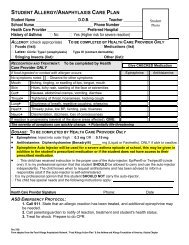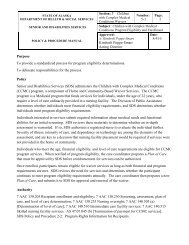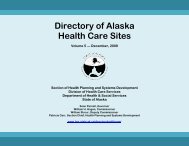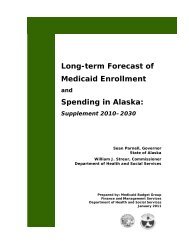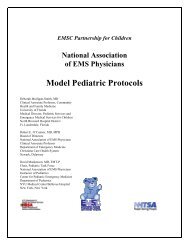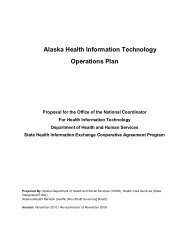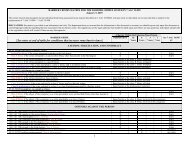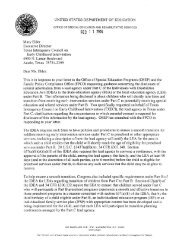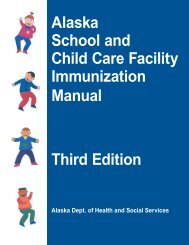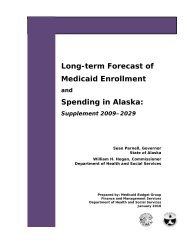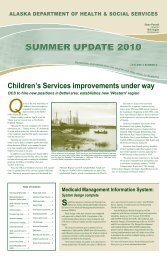ehr onc final certification - Department of Health Care Services
ehr onc final certification - Department of Health Care Services
ehr onc final certification - Department of Health Care Services
Create successful ePaper yourself
Turn your PDF publications into a flip-book with our unique Google optimized e-Paper software.
not be able to alter the substantive standards that apply to Certified EHR Technology<br />
solely through guidance. In addition, a real and practical need to ensure consistency<br />
among various standards regulations constrains the amount <strong>of</strong> flexibility we can<br />
incorporate into the standards we adopt.<br />
In addition, in accordance with Office <strong>of</strong> the Federal Register regulations related<br />
to “incorporation by reference,” which we follow for this <strong>final</strong> rule, the publications we<br />
reference are “limited to the edition <strong>of</strong> the publication that is approved” and do not<br />
include “[f]uture amendments or revisions <strong>of</strong> the publication.” Consequently, we do not<br />
include regulatory language that refers, for instance, to “Version 1.X” when “X” remains<br />
a variable.<br />
We do believe, however, that additional flexibility can be added into this and<br />
future rulemakings through at least one <strong>of</strong> four currently identified means.<br />
• Alternative Standards. In the Interim Final Rule and in this <strong>final</strong> rule, we have<br />
adopted “alternative” standards (and applicable implementation specifications) for<br />
several <strong>certification</strong> criteria. As a general rule, when an adopted <strong>certification</strong><br />
criterion refers to two or more standards as alternatives, use <strong>of</strong> at least one <strong>of</strong> the<br />
alternative standards will be considered compliant with the <strong>certification</strong> criterion.<br />
For the <strong>certification</strong> criterion at §170.302(k)(1), for instance, we have adopted<br />
HL7 2.3.1 and HL7 2.5.1 as alternatives, and the use <strong>of</strong> either standard (and the<br />
applicable implementation specifications) would be sufficient to comply with the<br />
<strong>certification</strong> criterion. In each <strong>of</strong> these instances, we have tried to balance the<br />
need for flexibility with the goal <strong>of</strong> advancing interoperability, while also taking<br />
into account that the HIT industry has not yet migrated to a single specific<br />
Page 38 <strong>of</strong> 228



